
OK so you got your Non Disclosure Agreement (NDA) signed by you and whomever you should meet up with to discuss your idea and work out how it's going to get on the supermarket shelves, but wait a minute... who's help do you need?
Many people approach a friend, an engineer, or perhaps their bank manager or a patent attorney or local Business Link perhaps, but are these the right people to talk to? When should you begin to have a dialogue with them? What materials will you need to help discussions move along? Who should you speak to first? Who next?
Different people you will come into contact with at various stages of the product development will require different information which is relevant to their role and you would do well to hold off speaking to those on the financial side of things until you've spoken to those on the intellectual property and technical aspects first.
As a general rule of thumb your first port of call could be an Intellectual Property (IP) Lawyer with an outline of your ideas as a sketch or even a written document containing a description of what your idea does, what problems it solves, references to other similar competing products (a.k.a. Prior Art), how your idea works.
This of course is not limited to physical product you can hold in your hand like a food mixer or something, in fact it could be anything such as a new chemical formula for a new type of polymer, or it could be a method of manufacture, it could even be a new medicine or software architecture. However, whatever your idea is we shall stick with the idea of this theoretical product being some sort of consumer product like a hair dryer or toaster.
So what should a IP lawyer do for you? Well for about £200.00 per hour I'd want them round my house tending to the garden and putting out the trash, but that's never going to happen. The least you could expect is some honest answers about your idea. Usually a good and experienced IP lawyer will have seen many ideas come and go and will have a reasonable hunch if your idea is worth pursuing or not.
In any case an IP lawyer can file for a patent, conduct a search on other idea to check if you idea is just duplicating something or may indeed infringe someone else’s patent. This latter point is particularly important because if your great idea does indeed infringe someone else’s idea and the sue, you could be in for a very hefty bill
Your IP lawyer should then be able to point you to a good industrial designer, in fact many IP lawyers refer to industrial designers to have your sketches professionally drawn up to file along with other documents and sent to the patent office.
You could of course bypass the IP lawyer and go straight to an Industrial designer to begin the detailed design and development of your idea to prototype and file your patent later or perhaps not even file a patent at all.
Well more on the role of an Industrial Designer in Part 4 of this series but for now let’s delve a little further into the minefield that is Intellectual Property.
First of all let me get my little disclaimer out of the way... if what I tell you here goes horribly wrong then it’s your own fault for being a cheapskate and listening to an old hack like me and not seeking out the advice of a professionally qualified and accredited IP Lawyer, so I wash my hands of you..nerrrrr :-P
OK that’s that out of the way... now where were we? Oh yes IP
Let’s suppose for a moment you have spent a few thousand pounds of your lifesavings with an IP lawyer drafting up such things as descriptions, abstracts, mosaics and claims, you get your patent applied for certificate in the post and you proceed with the next step.
The next thing your IP lawyer (or yourself if you decided to go it alone) should do is ask for a search of prior art. Actually I normally advise to have this done first as finding out your idea has already been patented can prevent you wasting money on an application that won't be granted and if that doesn't put you off, it at least gives you some direction NOT to go in if you still want to develop your idea. This information should be presented to your industrial designer for their reference.
After the search your patent, if accepted on the grounds no other patent of the same idea has been granted, will be published after approximately 18 month from your initial filing date. Publishing your idea means that your idea is now in the public domain for anyone to read and COPY
After your patent application has been published its time to spend some more of your hard earned wonga on a "substantive examination" which basically is a panel of technical types looking at your idea and deciding if its "novel, inventive and not otherwise known to one skilled in the art". If you think that a convoluted way of saying "is it a new idea" then read a few abstracts... them IP lawyers sure do earn their money.
Continuing with the IP lawyers for a moment, let’s just consider if they really are worth the £200.00 per hour or up to £600.00 per hour plus for worldwide applications that they will charge you. After all there’s nothing stopping you filing your own... and that would only set you back a couple of hundred.
As I mentioned above, take some time to read some of the many hundreds of thousands of patents files with the UK Intellectual Property Office and you will read obscure terms like "substantially coaxial to" and "normal to the face of". All a bit weird and esoteric if you ask me and I happen to read lots of them.
Not only will an IP lawyer draft your application in a language that the Intellectual Property Office likes, they will also write your application to be as robust as possible and as commercially attractive as possible.
So what does it mean to have a robust and commercially attractive patent? Well if your patent says something like :-
" it's a box with a lid for putting shoes in"
then practically anyone could come along and say:-
"it’s a container occupying a three dimensional space having in internal volume accessible via an opening to one or more surfaces to facilitate the filling of aforementioned internal volume with a variety of objects. The opening is closed via singular or multiple surfaces dimensioned to substantially reduce said opening to proportions that disallow the extraction of said objects without first being moved or removed form said opening"
In the first example you invented a shoe box, in the second example you invented all boxes... which idea do you think is robust and commercially attractive? Which idea is worth more? Which idea is most likely to go unchallenged by some skilful rewording of some future patent application? Like I said those IP lawyers may well be expensive, but if your idea is really that good, then it
could be money well spent. Oh, one more thing, You are very unlikely to get any form of investment for an idea that hasn’t been patented.
In the UK there is the "Smart Award" accessed via Business Link, but you'll need a very strong case to get the grant and to get the grant you must not have done ANY R&D work before applying and you'll need a substantial amount of your own money and a strong business plan for exploitation of the concept normally requiring the high possibility of the creation of jobs.
Well now for some horror stories, the sort that makes would be inventors shiver with terror. These are necessary tales of woe in order to point out some of the many traps they lie in the dark undergrowth of Intellectual Property Law. Some are well know, some are not. Are you sitting comfortably? The we shall begin.
Once upon a time there was a young inventor whom we shall call Mr X to protect their identity and he had a wonderful idea. Mr X said to himself "if this isn't going to make me millions then my name isn't James Dyson" OK Mr X may not have actually used those very words but I’m using a good deal of artistic licence here so give me a break OK... sheesh!
Well as is well know Mr Dyson invented the 'dual cyclone' bag less vacuum cleaner and almost got his idea ripped off by one of the biggest manufactures of 'Hoovers'. But Mr Dyson sued the 'Hoover' manufacture and won, but before winning his case Mr Dyson was also in debt to his lawyers to the tune of some £18,000,000... Bet he's glad he won then!
Another tale I tell is of a friend of a friend of a friend who invented a new type of hearing aid. Many thousands of pound into his development he employed the services of an Intellectual property lawyer...who duly ripped off the idea and tried selling it to someone else!
My final tale and one I was personally closely involved in as an industrial Designer. A plumber had invented a new type of fitting that allowed assembly of high pressure fluid systems without traditional solders or compression or crimp fitting and could therefore be easily repeatably dismantled and re assembled. The patent as mentioned earlier was robust and had applications ranging from domestic plumbing fittings to automotive and aerospace fluid systems. As you can probably guess it was worth quite a bit.
The plumber, unable to fund manufacturing himself approached some venture capitalists who seeing the potential funded further development and subsequently floated a new company on the stock market and headed up by one of the UK's most celebrated chairman’s and a team of heavyweight business men CEO's directors engineers and such like, to raise further capital to buy out one of Europe’s largest plumbing fitting manufacturers and a hydraulics specialist.
I was approached to develop a power tool to make the required groove and chamfer on the end of tubes after a number of vendors had failed to achieve the correct geometry as required by the fitting being under high pressure in hydraulic systems.
Having patented the required tube manipulation technology on one of my earlier projects, a prototype was built for the company which worked well within the specified limits and in fact allowed the company engineers to further improve the performance of the fittings making them even more attractive to their automotive and aerospace customers.
After some time I was curious that I had no further enquiry about further development of the power tool which was necessary for the company to fully exploit their IP. I did wonder in fact if my robust patent had in fact fallen foul of some clever engineering by this giant of a company.
I telephoned... no such number. I Googled, and to my amazement... the company had gone broke!
It transpired that the inventor of the fitting had taken the PLC to court disputing who actually owned the IP as the inventor thought he sold a licence and the PLC thought they owned the rights in full.
Instead of finding some common ground with the inventor and reach a deal the PLC decided that they would stick to their principles and counter sue. As the lawsuit dragged on the PLC share price went down and down and down. Sales for fittings declined as customers waited the outcome of the court case, the inventor had notched up a bill with his lawyers of some £34,000,000.
End result? The inventor lost and was bankrupt with a £34M debt, and the PLC you might ask? went on to rip roaring success having claimed victory and exploited the IP... NO they went into receivership despite winning as share price fell catastrophically low and a captain of industry fell on his sword. Corporate ego can be just as damaging as a personal one.
Whilst it may win investors and bank managers over to have a patent for your idea, believing as they often do that a patent will bestow a magical protective shield around the business, lest ye not forget it’s one thing to have a patent… it’s an entirely different proposition defending it.
And that brings me back to an earlier point I made regarding what an IP lawyer can do for you. Remember that search? Well make sure you or your lawyer does their homework or you may find yourself on the receiving end of a law suit for infringement of someone else’s IP.
In the next instalment we will visit the industrial designer and look what expertise they can offer to an inventor in the quest for the materials needed to win that all important investment from the 'Dragons"




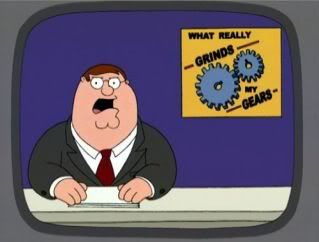




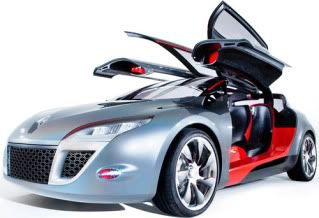
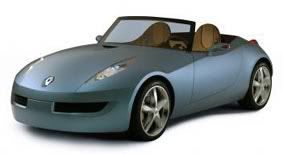 A bit disapointing really considering the scale of the World Series to have only one concept car and one scale model and a few renderings. At a time when design is the second fastest growing industry and innovation being touted as the saviour of all things reccesion, I think Renault have missed an oportunity here.
A bit disapointing really considering the scale of the World Series to have only one concept car and one scale model and a few renderings. At a time when design is the second fastest growing industry and innovation being touted as the saviour of all things reccesion, I think Renault have missed an oportunity here.


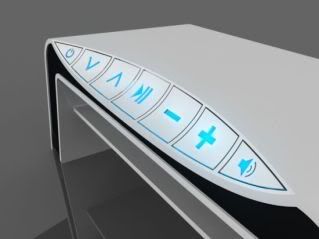



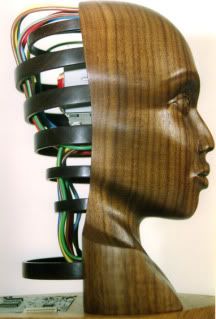 One such sculptor I often look to is my good friend Andrew Thomas whose work can be found at
One such sculptor I often look to is my good friend Andrew Thomas whose work can be found at 


